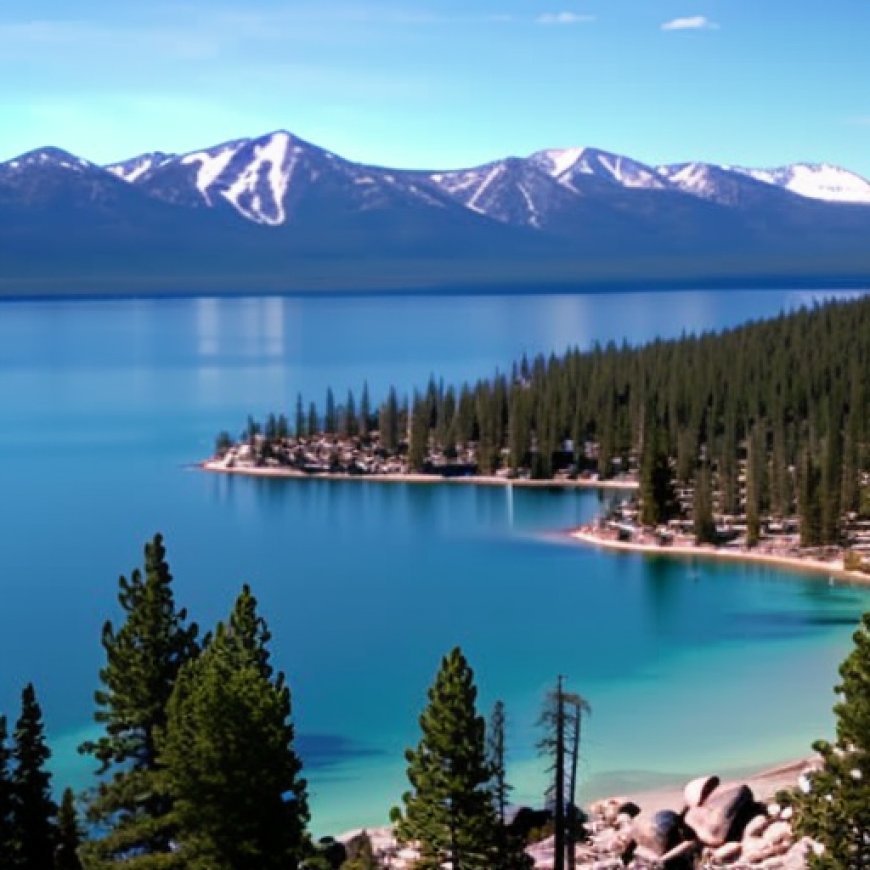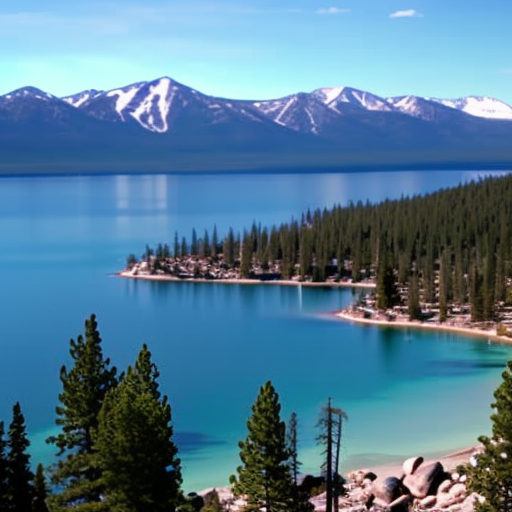Taking a deep dive into Lake Tahoe: Tahoe Environmental Research Center a fundamental resource for Lake Tahoe’s future
Taking a deep dive into Lake Tahoe: Tahoe Environmental ... Sierra Sun


The Importance of Sustainable Development Goals in Lake Tahoe Research

Provided / Heather Segale, Tahoe Environmental Research Center
The Lake Tahoe basin’s landscape is ever-changing, hosting a full four seasons year-round. From warm summer days basking in alpine sunshine, to historical snowfall during winter seasons, Lake Tahoe is coined the jewel of the Sierra Nevada Mountains for good reason.
TERC’s Contribution to Sustainable Development Goals
Further studying Lake Tahoe’s fluctuating environment, University of California, Davis’ Tahoe Environmental Research Center, also known as TERC, has been taking charge for years, analyzing the Lake Tahoe region overall and the impact that human development has had on the Lake Tahoe basin in the past five decades.
Along with analyzing the impact of urbanization in Lake Tahoe, TERC scientists analyze Lake Tahoe’s lake clarity, aquatic invasive species, microplastics, lake mixing, forest conservation, wildfire impacts, and much more. The research center is motivated to continue their proactive research and be a resource to the public.
TERC’s Mission Statement
“UC Davis Tahoe Environmental Research Center is dedicated to interdisciplinary research and education to advance the knowledge of aquatic and terrestrial ecosystems and their interactions within nature and developed Earth systems, and to communicate science-informed solutions worldwide,” TERC’s mission statement reads.
While the physical research center opened in 2004 in Incline Village, Nev., the founding scientific research dates back centuries, to what TERC still uses as its foundation in the present day.

Historical Research and Lake Clarity
18th century physicist John LeConte was the first professor hired by the University of California Davis in 1868. LeConte initiated the first scientific readings in Lake Tahoe, including the first measurements on Lake Tahoe’s lake clarity. Close to a century later, UC Davis began conducting research on Lake Tahoe in 1958, resulting in over 60 years of modern data that describes and further analyzes Lake Tahoe’s ecosystem, as well as its watershed and airshed.
From decades of research, in the present day, TERC scientists still measure Lake Tahoe’s lake clarity every 10 days, lowering a white, 10-inch Secchi disk into the lake from a UC Davis research vessel. The lake clarity measurement composes the data that is included in the annual State of the Lake report, in turn providing scientists as well as local, state and federal government agencies detailed information on Lake Tahoe’s overall health to assess and guide future decisions.
“This pivotal research stands apart in importance from any other that has been conducted in the country, [it’s] particularly useful in understanding the impact of change in freshwater environments over time,” Director of TERC Geoff Schladow said.
The ongoing study of Lake Tahoe’s
SDGs, Targets, and Indicators in the Article
1. SDGs Addressed or Connected to the Issues Highlighted in the Article:
- SDG 14: Life Below Water – The article discusses the impact of human development on Lake Tahoe’s ecosystem, including lake clarity, aquatic invasive species, and microplastics.
- SDG 15: Life on Land – The article mentions forest conservation and wildfire impacts as areas of study by the Tahoe Environmental Research Center.
2. Specific Targets under the SDGs:
- Target 14.1: By 2025, prevent and significantly reduce marine pollution of all kinds, particularly from land-based activities, including marine debris and nutrient pollution – This target is relevant to the issue of microplastics in Lake Tahoe.
- Target 15.1: By 2020, ensure the conservation, restoration, and sustainable use of terrestrial and inland freshwater ecosystems and their services, in particular forests, wetlands, mountains, and drylands – This target is relevant to the issues of forest conservation and wildfire impacts in the Lake Tahoe basin.
3. Indicators Mentioned or Implied in the Article:
- Lake Clarity Measurement – The article mentions that TERC scientists measure Lake Tahoe’s lake clarity every 10 days using a Secchi disk. This measurement can serve as an indicator to track progress towards improving lake clarity.
- Concentration of Particles – The article states that the concentration of particles in a specific size range, such as silt, clay, and phytoplankton, affects Lake Tahoe’s lake clarity. Monitoring and analyzing these particle concentrations can be used as indicators to assess the health of the lake.
- Zooplankton Population – The article mentions the role of zooplankton Daphnia and Bosmina in improving lake clarity by consuming particles. Monitoring the population of these zooplankton species can be an indicator of the lake’s overall health and its ability to maintain clarity.
Table: SDGs, Targets, and Indicators
| SDGs | Targets | Indicators |
|---|---|---|
| SDG 14: Life Below Water | Target 14.1: By 2025, prevent and significantly reduce marine pollution of all kinds, particularly from land-based activities, including marine debris and nutrient pollution | – Lake Clarity Measurement – Concentration of Particles |
| SDG 15: Life on Land | Target 15.1: By 2020, ensure the conservation, restoration, and sustainable use of terrestrial and inland freshwater ecosystems and their services, in particular forests, wetlands, mountains, and drylands | – Concentration of Particles – Zooplankton Population |
Behold! This splendid article springs forth from the wellspring of knowledge, shaped by a wondrous proprietary AI technology that delved into a vast ocean of data, illuminating the path towards the Sustainable Development Goals. Remember that all rights are reserved by SDG Investors LLC, empowering us to champion progress together.
Source: sierrasun.com

Join us, as fellow seekers of change, on a transformative journey at https://sdgtalks.ai/welcome, where you can become a member and actively contribute to shaping a brighter future.







